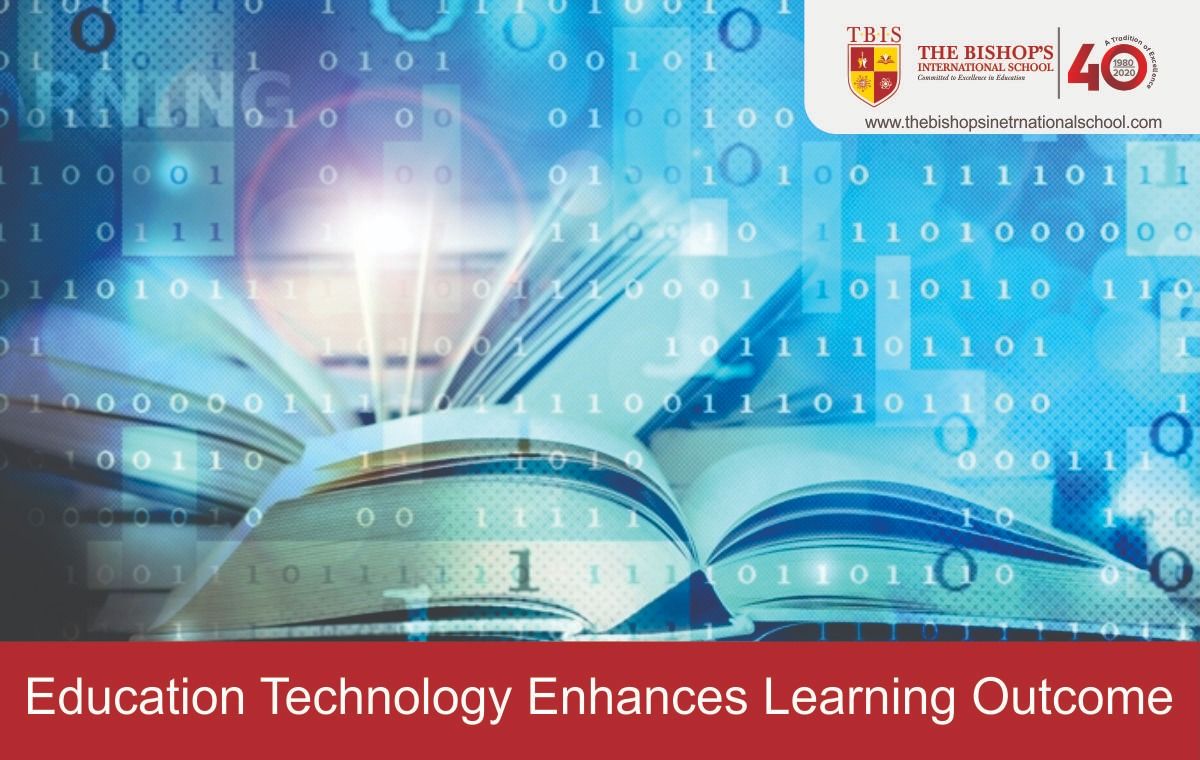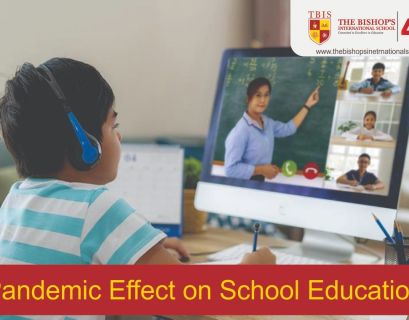
Education Technology Enhances Learning Outcomes
Education technology generates adaptive interfaces, classroom commitment boosters, education-specific fundraising sites and more. Kids can undergo a more engaging and individualized learning experience by having IT tools in the classroom
The current generation of people is digital citizens raised with technology at their fingertips. The advanced teaching tactics are providing their power to magnify student engagement and an individualized approach to learning. Advanced technology has the unimaginable ability to reconstruct education inside and outside the classroom. It helps the students to collaborate, gain access to information, control their academic performance and interest with teachers. Education technology enhances both inside and outside learning outcomes. Continue to know more about it.
Education technology
Education technology generates adaptive interfaces, classroom commitment boosters, education-specific fundraising sites and more. Kids can undergo a more engaging and individualized learning experience by having IT tools in the classroom. Classrooms have moved much forward than those clunky desktop computers. With the help of detect educators can create more interactive online courses and even robots that can take notes and record lectures for students who are ill.
The education technology tools are transforming classrooms in different ways like IoT devices are being praised for their intelligence to build digital classrooms for learners. Edtech robots are making the students stay interacted through fun forms of learning. Also, blockchain tools and ML are supporting educators with grading tests. The potential for scalable individualized knowledge has performed an important role in education technology. With this, everyone learns at their own pace and in their own style.
The education technology tools make it simple for staff to create unique lesson plans and learning experiences. Regardless of the learning abilities and students age, edtech boost the learning capabilities of all students. Most teachers believe that tech is going to have a major impact on the way they educate in the near future.
Edtech tools
Plenty of edtech tools are out there that offers enhanced experiences for students, teachers and even administrators. There are different types of Education technology tools that range from VR headsets to data science-based platforms. Every tool serves various purposes, for instance, a VR headset that helps students holistically learn about a certain subject, and certain platforms help teachers identify learning habits and craft personalized lesson plans for each student.
Using technology in education
One of the undenying facts is that the use of technology in education is on the rise. The research found that there has been exponential growth in the use of digital technologies this century. One of the important ingredients that fuel the learning process for students is communication between parents and teachers. The use of education technology makes it easy for schools and teachers to have effective communication with parents.
Education technology makes learning more engaging and active
Active education technology learning is far more engaging than simply taking notes while a teacher is lecturing. When compared to traditional instruction methods, education technology has been demonstrated to work more effectively. The technology helps foster important workplace skills like collaboration, communications, creative problem solving and critical thinking.
The recent study compared the math and science classes academic performance of students using traditional lecturing and education technology. The result showed that students in classes improved by about 6% in the active learning classes, while students in traditional lectures were 1.5 times more likely to fail.
It has proven the effect of technology on education
When education technology is implemented properly, it can boost student engagement and sense of achievement, especially among those students who are at risk. Rather than just being the recipients of content designed by others, scholars acquire more to generate new content themselves with the help of edtech tools. For instance, students with several ninth-grade English groups of at risks, including many who had failed English exams before, outperformed other higher-tracked groups in their school on the state exam.
With education technology, every student has a digital device and wireless internet access, where students can make use of research-based websites in place of hanging off papers. Students with behavioural problems and high rates of failure were now highly motivated since the technology helps the students to develop intrinsic motivation, enabled and inspired them to achieve on their own. The education technology gives the student an atmosphere of active learning. With education technology, students are involved in the learning process; they are more interested in what is going on in class and their own learning decisions.
It creates a Personalized Learning Environment
Normally teachers adapt their material to each student’s needs when at the same time they give student’s the choice on how what and when they learn. This is the place where technology can take advantage since it makes it easier for teachers to identify the learning requirement of each student. For instance, some systems enable teachers to create specific playlists they can assign to specific students to promote certain skills gaps.
Parents can be one the loop with Child's Progress
Another major benefit of education technology is the ability it provides to parents to be actively engaged in the academic progress of their kids. It helps the parents to get instant updates about their child’s grades, classes, school projects and special events as well. Every parent receives text messages, emails and even get automatic notifications to keep track of their child’s progress, and they can communicate with teachers and get personalized feedback.
Types of Educational Technology
Synchronous and asynchronous, linear learning and collaborative learning are three types of educational technology. Continue to know about its types in detail.
Synchronous and Asynchronous
With every day new inventions, students can learn in or out of the classroom. With the help of tech, learning can be self-based with the help of various resources available on the internet.
Synchronous Learning – It refers to discussing thoughts and information regarding certain topics with others simultaneously. For instance, people are online and working jointly like face to face discussion, live teaching and feedback sessions.
Asynchronous Learning – This type of learning is mainly done through online textbooks, audio/video courses, emails etc. In this type of learning, students can read the lesson again without falling behind in the class. It allows students to repeat their course without any embarrassment of being in the same class with younger students.
Linear Learning
It is the next type of educational technology that is all about Computer-Based Training (CBT), where the information about the Programme is sent to students’ computers, tablets, or smartphones. Linear learning is much like reading an online manual or book. This type of learning is frequently used in teaching static processes such as using software or completing mathematical equations.
Collaborative Learning
This learning type is nothing but working with another person or group to achieve or do something. It can be done in groups by working together. In collaborative learning, individuals can learn through collecting data, listening to others’ thoughts rather than simply learning the provided resources.
All these types of edtech are the new era for learning where individuals need not attend classes, they can learn from anywhere regardless of age. Also, it makes students not only too dependent on teachers for proving knowledge, whereas they can learn through different sources.
How do Education Technologies Help Students and Teachers?
Students
The technology is initiating up a new way of learning for students of all ages and also improving collaboration in the classroom. Here are some points on how education technology is directly impacting the way students learn.
24/7 Access to Learning
With education technology, every student’s get 24/7 access to learning in their own space. Internet of Things (IoT) makes it easier for students to have full access to the classroom in a digital environment. Regardless of the place the students are, the connected devices are giving students Wi-Fi and cloud access to complete work at their own pace on their own schedules. Whether students are at school, on the bus or at home, the different apps help students and teachers stay in communication when clarifying their quires.
Increased Collaboration
Tablets and cloud-enabled tools enhance collaboration in the classroom. Smart devices loaded with online lessons and learning games act as a tool to solve problems together, and the cloud-based tool will help the students to upload their homework and digitally converse with one another.
Personalized Educational Experiences
By implementing education technology, educators come up with opportunities to craft personalized learning plans for each of their students. This kind of approach aims to customize learning based on every individual skills, strengths and interest. Video lecture help students to learn at their own pace since students are allowed to pause and rewind lectures. This helps the students to fully grasp lessons.
With education technology, teachers are also allowed to make use of analytics to see the troubles of each student with certain lessons and offer further help on the subject. There is no more necessary for being emphasized to measure academic progress since educators can make use of apps that consistently measure overall aptitude. Teachers can make use of it to craft specialized learning plans based on each student’s strengths and weaknesses, especially to find negative trends that can be proactively thwarted with intervention.
Flipping The Classroom
Normally in the traditional method, students have to listen to lectures or read in class then work on projects and homework at home. But the education technology flips the traditional notion of classrooms and education. In the Edtech solution, students can watch video lectures and at home at their own pace, using class time to collaboratively work on projects as a group. This method will help foster self-learning, creativity and a sense of collaboration among students.
Attention-Grabbing Lessons
Mostly when you sit in the class, you will be half-listening and half-day dreaming. Most of you agree this is right. But with education technology, you no need to worry about it. Education technology tools help to craft gripping and education lesson plans for scholars. Some innovative instances of learners using edtech involve socializing with other classrooms around the world via video, having students submit homework assignments as videos or podcasts.
For Teachers
Not only students benefit from education technology but also teachers. They are viewing edtech as a system to promote productive learning practices and free time in the classroom. Here are some points on how edtech helps teachers get back to doing what they do the teaching.
Automated Grading
There is many artificial intelligence (AI) tools that teachers can make use of it to make grading easier because all these apps use ML to analyze and assess answers based on the specifications of the assignment. Especially these tools can be utilized for objective assignments as it frees up hours that teachers usually spend grading assignments. Education technology tools offer additional fee time for teachers that they can make use of one-on-one time with both struggling and gifted students.
Paperless Classrooms
With the help of education technology, you can save printing budgets, wasting paper and countless time spent at the copy machine. The digital classroom brings about an easier way to grade assignments. It also lessens the burden of having to safeguard hundreds of homework files and promote overall greener policies in the classroom.
Classroom Management Tools
Making a large group of kids do something can be a challenging task, but education technology has the potential to make everything from the way teachers communicate with their students to how students behave a little easier. There are many apps that help for sending a reminder to parents and students about projects or homework assignments. The use of management tools in the classroom brings a more collaborative environment.
Eliminating Guesswork
In the traditional method, teachers should spend infinite hours striving to evaluate the skills or areas of development of their students. The use of education technology changes all of these things. Currently, there are many tools, data platforms, and apps that regularly evaluate students’ skills and requirements. In edtech, some tools use real-time data that helps teachers discover a student’s strengths, weaknesses and even signs of learning disabilities.
Final Thoughts
By implementing educational technology, educators can create digital, interactive textbooks and gamify lessons and more. Edtech makes the learning more interesting and interactive by allowing students to learn in their own space.



